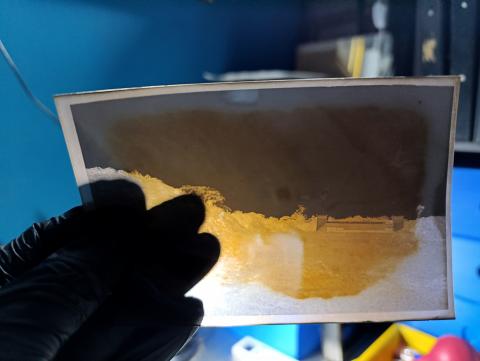Aims and objectives
This project aims to digitise documents of the Hume Family Collection and make them available on the web. The project will need to clean, stabilise and organise the materials, before digitising and uploading to the Web. This collection is significant for the study of the pre-industrialisation process and the first steps of industrialisation in Argentina during the early 20th century. It also represents a very valuable source for local business history.
The material is primarily from the early 20th century. Since the second half of the 19th century, Argentina was a regular exporter of raw materials such as wool, wheat, corn, and later, meat to the international market. Simultaneously and in order to transport the products to the port city of Buenos Aires, trains were a crucial means of transportation. Through British investments the railroad network expanded and became one of the promoters of both economic and social development. The expansion of industry began a little later but unquestionably related with agro activities. This slow growth quickened during the First World War with the country needing to replace industrial goods - so the construction of factories and the enlargement of railroads accelerated in the first decades of the century.
The Hume family arrived in Argentina in the late 19th century and founded the engineering firm ‘Hume Brothers’ in 1880. The company continued until the 1970s. Its main work consisted in planning and building thousands of kilometers of roads – extremely necessary in this context- and also industrial infrastructure. The firm managed similar enterprises in Uruguay, Chile and Brazil around the same period. They usually installed themselves with their families in camps during the works and lived together with the workers.
The material is very special and unique. The glass plates and the photographs illustrate the works and the workers in quarries, bridges, etc. Through them it is possible to observe the transformation of the natural landscape, the traditional way of living and work practices through modernisation. The texts that complement the images include drawings, handmade sketches, budgets of railroads, train stations, warehouses, factories and relevant buildings. The collection will enlighten historical, economical and sociological aspects of this transition from an agro export economy into an industrial one.
The collection consists of approximately 1,500 glass plate stereographs (of which about 1,000 will be digitised), approximately 10,000 documents and three letter books of about 2,500 pages. The glass plate stereographs show emulsion dried, unglued and lifted; vanishing images; and scratches. Some images have been affected by mould. The letter books are in a vulnerable state, with the paper brittle with fading ink.
The Hume Family Collection is currently kept in a room at the University with poor climate conditions. New air conditioning equipment will be purchased from other sources and acid-free envelopes and boxes will be purchased to improve the storage conditions of the original material.
A digital copy of all the material will be kept at the Universidad de San Andrés and a copy deposited with the British Library.
Outcomes
The records copied by this project have been catalogued as:
- EAP563/1 Colección Hume Hermanos [1884-1985]
Due to the cyber-attack on the British Library in October 2023, the archives and manuscripts database is currently inaccessible and we are unable to provide links to the catalogue records for this project.




